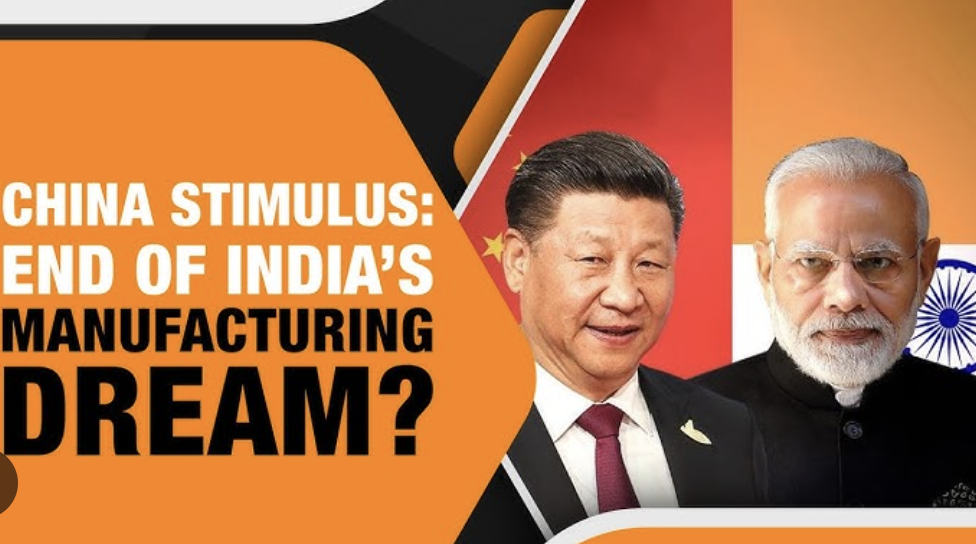In a surprising turn of events, China’s recent economic stimulus has begun to reverberate through the global financial corridors. Foreign Institutional Investors (FIIs) are shifting their focus from Indian stock markets to Chinese equities. The dramatic pivot has left many market analysts and investors scratching their heads, as they navigate this new and evolving landscape. This report delves deeper into the situation, unwrapping the implications and potential outcomes of this significant trend.
The Power of Stimulus: What Happened in China?
To understand the exodus of FIIs from Indian markets, we must first look at what transpired in China. In late 2023, the Chinese government unveiled an unprecedented economic stimulus package. This initiative is designed to revitalize their slowing economy and secure beyond immediate term growth. The stimulus measures include:
- Massive infrastructure development plans
- Tax reductions for businesses
- Substantial investment in technology and innovation
- Relaxation of financial regulations
This aggressive financial intervention has led to a renewed investor interest in Chinese stocks, as the markets are buoyed by the anticipated economic growth.
The FII Exodus: What It Means for India
India has been one of the favorite destinations for foreign institutional investors for several years due to its robust economic growth and promising corporate sector. However, the massive stimulus package from China has significantly altered this equation.
The shift in investment patterns has a few discernible impacts on the Indian economy and stock markets:
- Decreased Liquidity: With FIIs pulling out their capital, the Indian stock markets are witnessing reduced liquidity, which may lead to higher volatility and an increase in borrowing costs for businesses.
- Pressure on Exchange Rates: The withdrawal of foreign capital may exert downward pressure on the Indian Rupee, impacting the import-export equilibrium.
- Impact on Market Sentiment: The movement of significant institutional investors can often drive retail investor behavior, potentially leading to cautious or bearish market sentiment.

Resilience in Adversity: India’s Economic Stronghold
Despite the alarming trend, India is far from being in a dire situation. The nation’s economic fundamentals remain robust, characterized by a burgeoning middle class, rapid urbanization, and a dynamic entrepreneurial ecosystem. Here are some key factors that bolster India’s economic resilience:
- Domestic Consumption: A significant proportion of India’s GDP is driven by strong domestic consumption, making it less susceptible to external financial shocks.
- Diverse Economy: India’s economy is well-diversified, with substantial contributions from various sectors including IT, manufacturing, services, and agriculture.
- Policy Support: The Indian government has introduced several reforms to make doing business easier and attract long-term investments, such as corporate tax cuts, improved labor laws, and the Make in India initiative.
- Growth Potential: With a young and educated workforce, India has significant untapped growth potential that assures long-term investors of strong returns.
Navigating Volatility: Strategy for Investors
While the current scenario presents challenges, there are also strategies that investors can employ to navigate this period of volatility:
- Diversification: Diversifying investments across different sectors and asset classes can mitigate risks associated with market fluctuations.
- Long-term Focus: Maintaining a long-term investment perspective can help investors ride out short-term volatilities and capitalize on long-term growth prospects.
- Quality Stocks: Investing in fundamentally strong and well-managed companies can provide stable returns even in a volatile market environment.
While some FIIs are swayed by the short-term growth potential of the Chinese markets, many institutional and retail investors recognize the intrinsic, long-term value in Indian markets.
Ending on a Positive Note: India’s Bright Future
The reallocation of investment by FIIs from India to China is undoubtedly significant, but it does not overshadow India’s economic prospects. In the grand tapestry of global finance, phenomena like these are cyclical. India’s resilience, unparalleled growth potential, and diversified economy position it as a robust investment destination. Investors with a keen eye for long-term value will continue to find India an attractive market.
In summary, while the short-term outlook may present challenges, India’s long-term growth narrative remains compelling. As with any market fluctuation, opportunities abound for vigilant and strategic investors.
“`